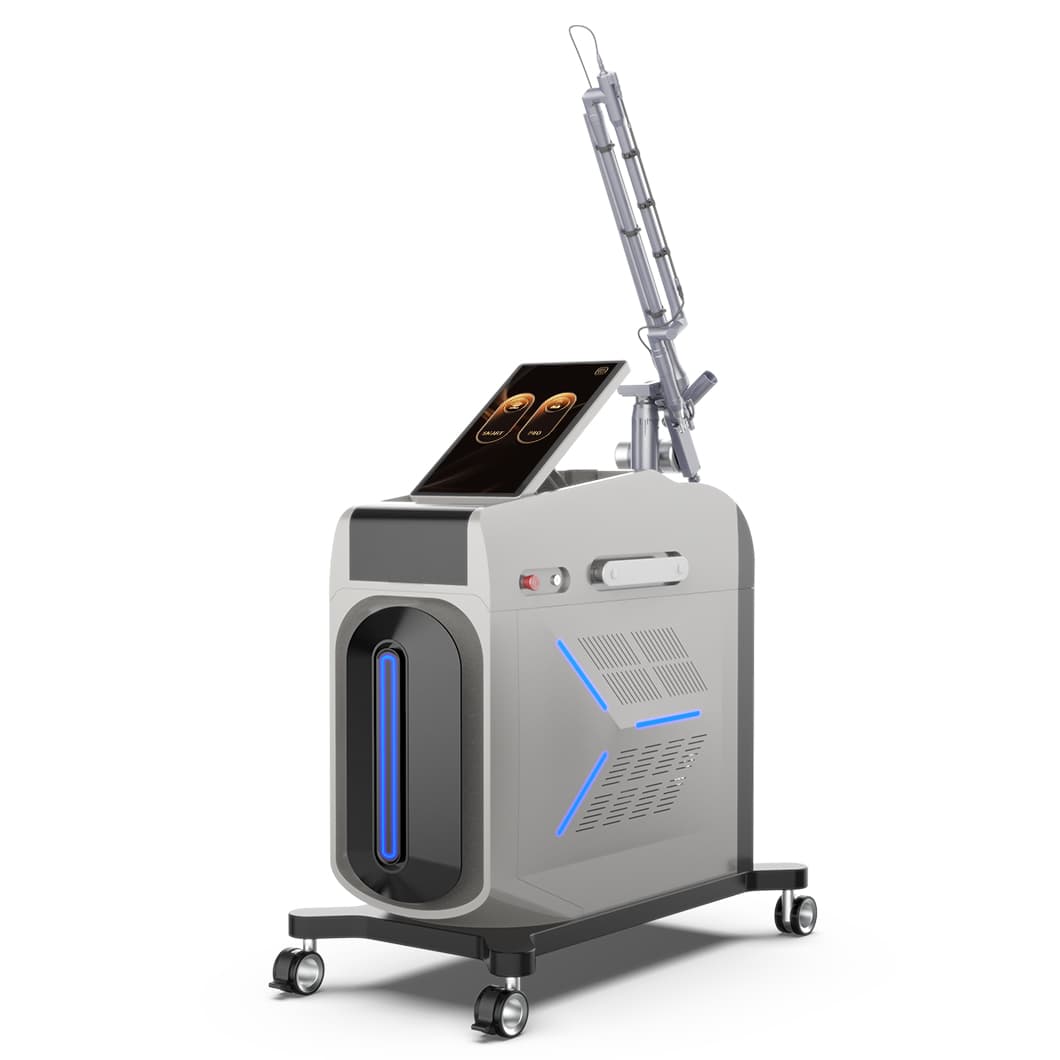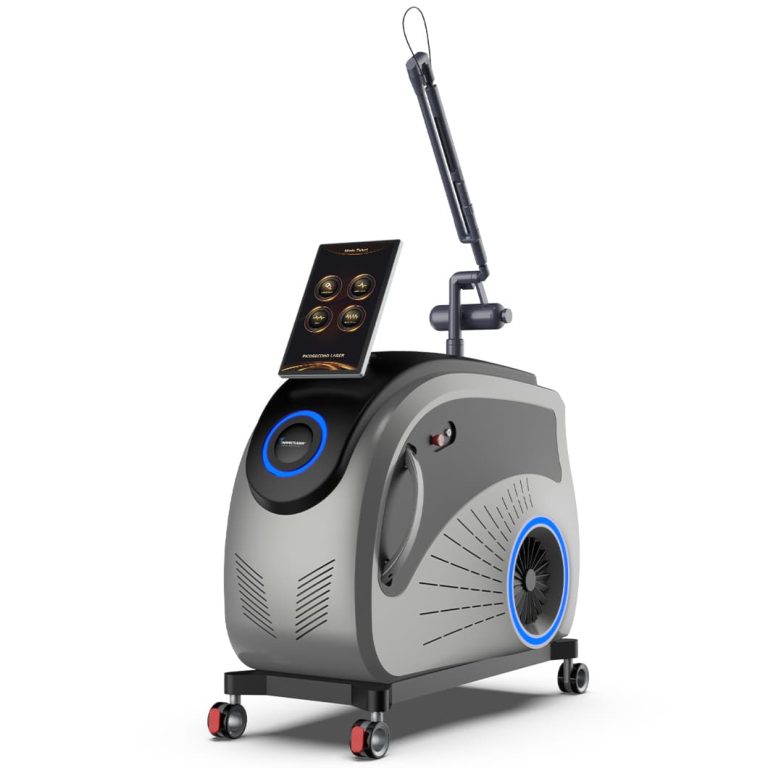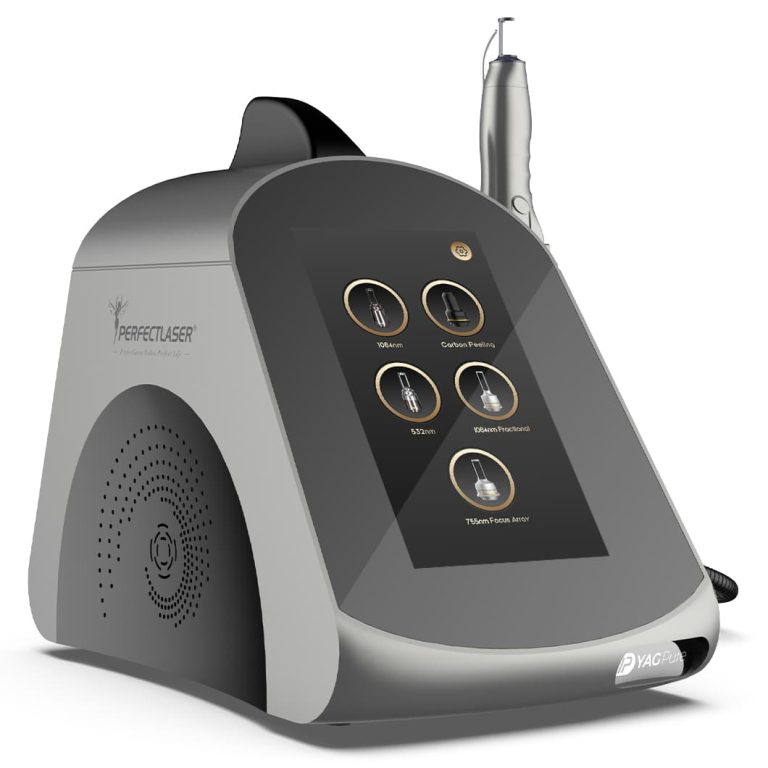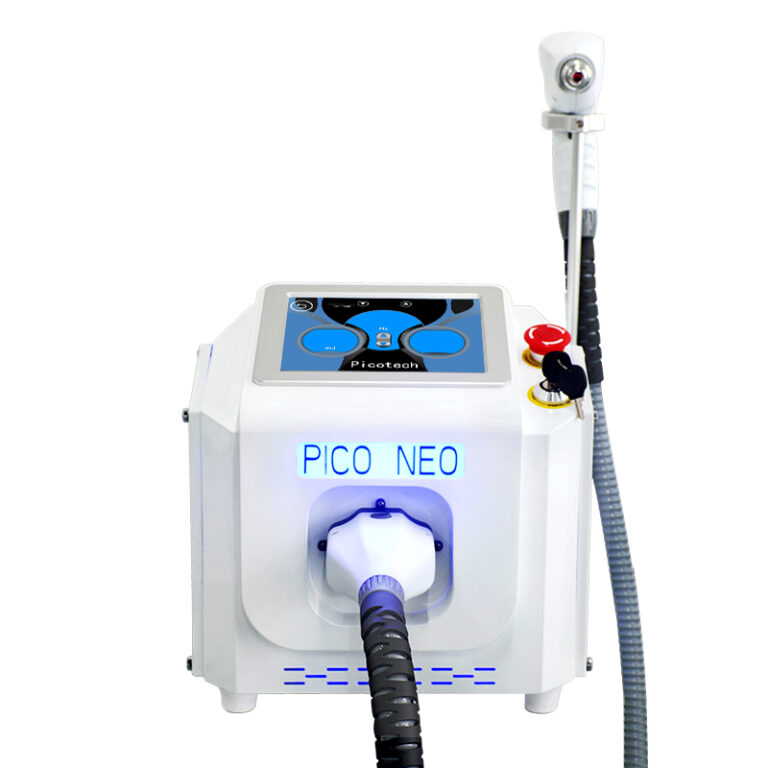Picosecond Laser Machine: Working Principle
A picosecond laser is an advanced type of laser device that emits light pulses with extremely short durations — in the picosecond range (1 picosecond = 10⁻¹² seconds). These ultra-short pulses make picosecond lasers highly effective and precise, especially in medical, aesthetic, and industrial applications.
Working Principle
The picosecond laser operates based on photomechanical and photoacoustic effects, rather than just photothermal (heat-based) effects like traditional lasers. Here’s a breakdown of how it works:
1. Ultra-short Pulse Duration
The machine emits pulses of laser light that last only a few picoseconds.
Despite the short duration, each pulse carries high peak power.
2. Photoacoustic Effect (Shockwave Action)
The laser targets pigment particles or other materials with high energy.
Instead of heating and burning the target, the energy creates a mechanical shockwave.
This shatters the particles (like tattoo ink or melanin) into tiny fragments.
3. Minimal Thermal Damage
Because the energy is delivered so fast, there is little time for heat to spread to surrounding tissue.
This results in less collateral damage, less inflammation, and faster healing.
Applications Based on Principle
Application Area How the Principle Applies
Tattoo Removal Breaks ink into fine particles for natural removal by the body.
Pigmentation Treatment Shatters melanin clusters with minimal heat damage.
Skin Rejuvenation Stimulates collagen with precise micro-damage.
Acne Scar Treatment Induces skin remodeling via controlled damage.























